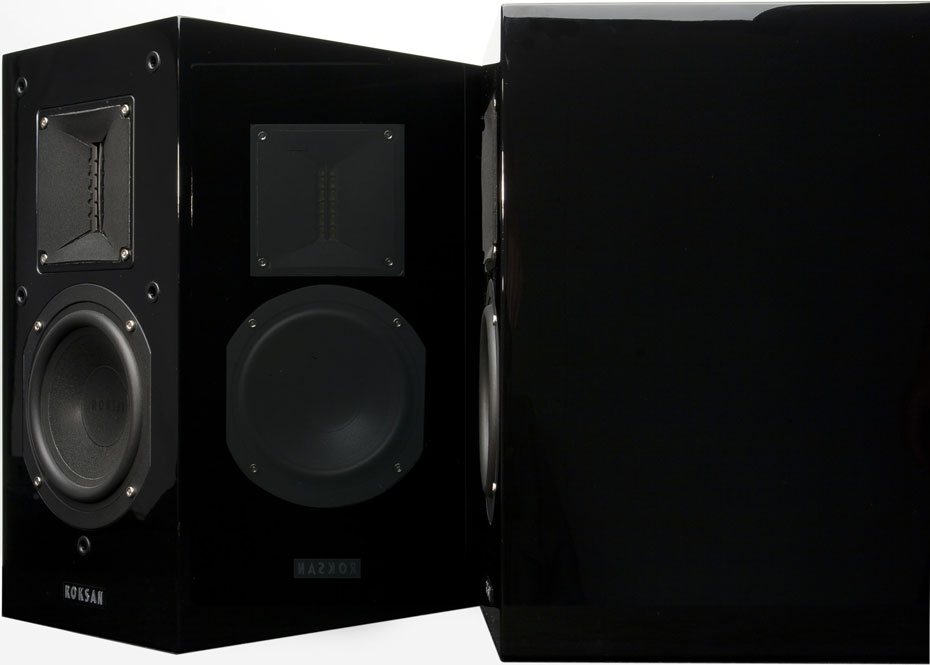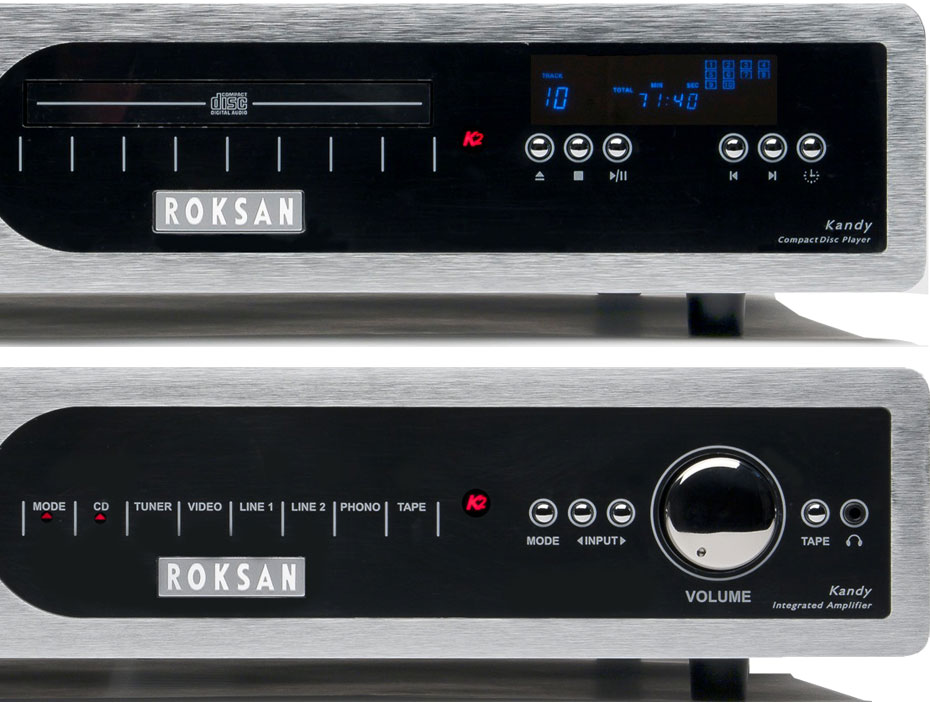K2 TR-5 Stand Mount Loudspeakers
The audio industry is littered with smallish 2-way standmounts in the $1000 to $2000 price range; generally speaking, I am not a fan of such speakers. I often find that their supposed advantages over floor-standing speakers such as driver integration and lack of cabinet noise are exaggerated. The TR-5 certainly has the usual stand mount speaker limitations. For example, bass is good for a standmount speaker in this price range, though they won’t plumb the depths like (for example) a number of Dynaudio’s offerings. Bass here is down to around 45hz, but it does seem weightier than most providing above average body to drums and piano. As with most solid state run systems the sound seemed better at higher levels.
Placing the speakers on Audio Note K speaker stands filled with sand/shot and using blu-tak to attach the speakers to the stands, they were well coupled without movement. The speakers are very well finished and seem a significant cut above the usual loudspeakers in this price range, thus adding a heightened sense of value for the dollar. Further to that sense of heightened value is the unusual ribbon tweeter mated to a 5 inch paper woofer. High quality connectors on the back allow for bi-amping or bi-wiring.
The TR-5 is a surprising bit of deliciousness in a sea of bland lifeless mediocrity. To reiterate – the bass won’t plumb the depths that some other speakers do ( such as my Audio Note J loudspeakers), but what they do right is to live up to the promise of the entry level high end standmount loudspeaker, and that is to communicate the musicians’ message in an utterly non-fatiguing fashion. Fatigue is an interesting audiophile buzz-word. Most people think that brightness in a system causes fatigue. And of course they are correct. A bright loudspeaker can be highly bothersome but fatigue can also be caused by disjointed sound. One reason many people gravitate to single driver speakers, full range panels, and small two-way designs is so they can hear a system that doesn’t sound like a bunch of drivers in a box. Such systems may not be “bright” but over time they can generate fatigue because they often sound artificial when the listener is reminded constantly of the tweeter operating in isolation of the rest of the speaker.
The TR-5 surprised me because most speakers with the biggest problem around driver integration in my experience are those that use very different driver materials such as metal tweeters with paper or polypropylene woofers. Hybrid panels often get criticized for this “separated” sound or lack of cohesiveness. Well that problem doesn’t exist here. Driver integration is remarkably well done. I don’t say this in the context of a $1500ish loudspeaker I say this against any two way loudspeaker I’ve heard. Roksan’s team has teamed these drivers to be in complete sync with one another. This alone sets them apart from, and arguably ahead of, their competition. Indeed, the TR-5 sounds more in step than considerably more expensive speakers such as the B&W N805.
And while I noted that the speaker doesn’t have quite as much bass depth as other standmounts in this class, that isn’t necessarily a bad thing. Many of those standmount speakers such as those from Dynaudio and Totem have impressive bass depth but they also tend to smear the mid band somewhat causing a sluggish presentation that increases the out of step presentation. The energy seems to linger longer in their cabinets creating a boom and sizzle quality. Not the TR-5. The paper woofer keeps up with the ribbon and bass has solid start stop action in busy passages, but retains enough warmth to make the lower notes of piano seem fuller bodied than one would expect from the size of speakers. One more point about bass – good bass costs money. The reality is that if bass is of primary concern you can always add a subwoofer or look into Roksan’s FR-5.
What about Cavities? Err caveats?
With many speakers in this price and size class the tendency is for a somewhat boom and sizzle presentation, because the maker needs to standout against similar looking speakers from the competition. They try and get that extra bit of frequency at both ends of the frequency spectrum. This impresses on quick auditions but becomes tiring over long sessions. Roksan avoids the problem largely because they’re selling audio reproduction, rather than selling boxes solely to increase market share.
So the answer is “no,” there are no cavities here but nothing is perfect. The treble is crystal clear and offers exceptional detail. Transient response is a cut above virtually everything I’ve heard in this price class. Cymbals have an appropriate amount of crash and horn instruments are extended without annoying ringing or overshoot. However, on Sophie Milman’s 2004 self titled album, I did detect some occasional sibilance. I also noted this on several other albums across genres: from Madonna’s Like a Prayer to Adele’s “Set Fire to the Rain.” I have noted these problems in the past with ribbon designs and solid state amplifiers. The result is an open clear presentation but with it a slight hyper-detailed presentation. To be clear, however, I was never put off by this presentation as I have been with other ribbon designs. Roksan has managed to walk a fine balance without going too far over the edge. And again – I am used to listening to my Audio Note J/Spe speakers mated to an exceptionally high quality integrated amplifier in the Audio Note OTO, components that retail for at two to three times the price. My home system simply possesses a more organic three dimensional body to the music than the K2 is able to generate.
What Roksan has done here is something that the vast majority of similarly priced systems just don’t manage to do, and that is to not bash you over the head with what it is doing wrong. The best budget systems lie by omission. In other words, what they lack is not readily noticeable until you hear something better. More expensive systems can (though certainly not always do) offer more of everything from attack and decay to bass weight to resolution. But for many, this system will be enough to satisfy on all fronts. It is all day listenable (and more importantly, enjoyable), it offers a superior treble band that is extended and crystal clear, if not perhaps as dynamic or powerful as some, and bass is taught without a lot of overhang.
There is some mild coloration in heavier passages where I felt I was hearing the box, but this is true of every other standmount speaker I’ve heard in this price range, and this system still managed to do Respighi “The Pines of Rome” (Reference Recordings) surprisingly well with far greater dynamics than other notable standmounts in this price range (such as the Totem Model One or B&W 705).
As I finish this review listening to Beethoven’s Piano Sonatas Vol 1 (Naxos 8.550045), I can say that Roksan understands more than a thing or two about the phrase “value for the money.” Roksan offers a complete system that gets music across without fatigue, with an impressive amount of finesse and articulation, as well as solid dynamics. Minor issues aside, I enjoyed my time with this system. Solid state systems that sounds good to a tube guy are few and far between – Roksan’s K2 system is one of the few.
- ← Previous page
- (Page 2 of 2)




Your review is well considered and insightful.
My Roxsan K2 TR-5 speakers tried with bipolar, valve, and modern digital amplification.
With bipolar solid state amps they performed in line with your report.
Valves, as expected added an overall warmth, but soften the bass, just what valve enthusiast want.
With Digital they surprised me, Bass is weighty and very fast, Treble, accurate and smooth.
My Panasonic SA-BX500 in Bi-Amp mode just won a reprieve !
DaveW
England